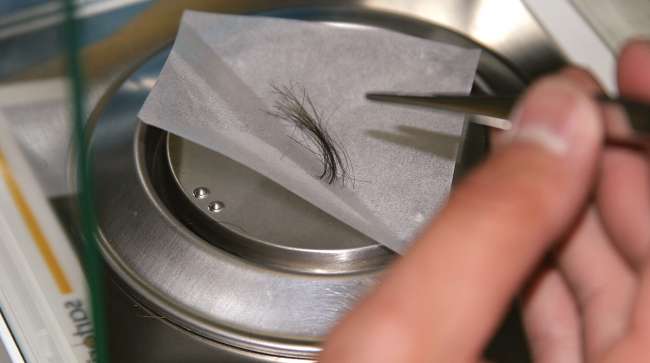Senior Reporter
Senate Panel Wants Explanation for Delays on Hair Testing Guidelines

A Senate committee on May 22 unanimously approved a bill that would require the Department of Health and Human Services to provide an explanation for a 15-month delay in issuing mandatory federal hair testing guidelines for safety-sensitive transportation employees such as truck drivers.
The bill, introduced earlier this month by Committee on Commerce, Science and Transportation Chairman Sen. John Thune (R-S.D.), also would require HHS to report progress on hair testing every 30 days and lay out a schedule, including benchmarks, for completion of hair testing guidelines.

Thune
Thune’s bill, if passed by Congress, also calls on HHS to issue final federal oral fluid testing guidelines by Dec. 31, study the possibility of adding a federal drug testing panel for the opiate drug fentanyl, and directs the Government Accountability Office to review the Department of Transportation’s collection, use and availability of drug and alcohol testing data.
It also would expand drug testing requirements for certain rail employees.
Urinalysis is currently the only federally approved drug-testing method for truck drivers.
A drug testing advisory board for an HHS sub-agency, the Substance Abuse and Mental Health Services Administration, has been working on the guidelines for the past two years, only recently completing a draft proposal that has not yet been made public.
Although Congress mandated that the hair-test rule be implemented by the end of 2016, Ron Flegel, chairman of the SAMHSA drug testing board, has said there still is no established timeline for review of the proposal before it is published in the Federal Register for public comment.

Ron Flegel addresses the SAMHSA drug testing board in March. (Eric Miller/Transport Topics)
“There are some scientific technical issues that have been addressed through literature or specific studies,” Flegel told board members at a March 20 meeting at the SAMHSA headquarters in Rockville, Md. “In order to develop scientifically sound mandatory guidelines the rule requires addressing these two specific scientific issues for the use of hair as a drug testing specimen. The timeline is not really static.”
Those issues, which include the impact of hair color and decontamination of hair specimens, have been resolved in the draft proposal, Flegel said. However, before the proposal can be posted in the Federal Register, it must gain approval of HHS and the White House Office of Management and Budget, according to Flegel.
Some motor carriers have been hair testing for years. Not only do hair samples have a longer detection window — up to 90 days — but the samples are collected in an observed test, preventing drivers from cheating.
Federal approval of the hair alternative would decrease the costs for carriers that currently conduct both urine and hair sample tests, as they would be required to conduct just one of the tests.
In a May 18 letter to Thune supporting the bill, American Trucking Associations President Chris Spear said the legislation was “important and timely.”
“By expanding drug testing requirements for certain rail employees, reviewing DOT’s collection and use of drug and alcohol testing data, evaluating the addition of fentanyl to the drug testing panel, and encouraging SAMHSA to complete its work on guidelines to allow for both oral fluid and hair testing, the Fighting Opioid Abuse in Transportation Act will provide the trucking industry and other transportation modes with the tools to better combat drug abuse, and thus improve the safety of our roads and bridges,” Spear wrote.
Thune said his bill, the Fighting Opioid Abuse in Transportation Act (S 2848), is intended to stem the opioid epidemic in the United States.
“In 2016 alone, more than 42,000 people died from opioid overdoses,” Thune said during the committee’s executive meeting. “Widespread abuse affects all industries and transportation is no exception.”
On Jan. 1, DOT began testing truck drivers and other safety-sensitive transportation employees for the semi-synthetic opioids hydrocodone, hydromorphone, oxymorphone and oxycodone. The agency has yet to report on the number of positive test results under the new requirement.




